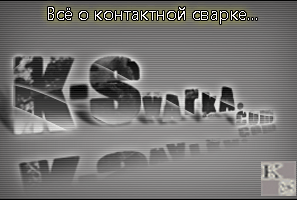Вся контактная сварка в деталях
 Контактная сварка
как способ неразъемного
соединения
деталей из разных материалов широко применяется во многих отраслях
промышленности. Контактная сварка позволяет коренным образом изменить
технологию, а в ряде случаев и конструкцию отдельных агрегатов и узлов в целом.
Потенциальные возможности контактной сварки значительны.
Контактная сварка
как способ неразъемного
соединения
деталей из разных материалов широко применяется во многих отраслях
промышленности. Контактная сварка позволяет коренным образом изменить
технологию, а в ряде случаев и конструкцию отдельных агрегатов и узлов в целом.
Потенциальные возможности контактной сварки значительны.
Преимущества и особенности услуг ремонта квартир под ключ в Химках
В наше время все больше людей предпочитают заказывать ремонт квартиры под ключ, чтобы избавить себя от необходимости самостоятельно контролировать и координировать все этапы ремонта. В Химках существует множество компаний, предлагающих услуги ремонта квартир под ключ, что делает выбор исполнителя непростым. Однако, при правильном подходе к выбору компании можно получить качественный ремонт по доступной цене.
Одним из главных преимуществ ремонта квартир под ключ в Химках является экономия времени и усилий заказчика. Компания, выполняющая ремонт, берет на себя все этапы работ - от разработки дизайн-проекта до завершения отделочных работ. Это позволяет заказчику сосредоточиться на других важных делах, не связанных с ремонтом.
Кроме того, ремонт квартир под ключ обычно выполняется профессионалами, что гарантирует качество и соблюдение сроков. В Химках есть множество опытных специалистов, способных выполнить ремонт квартиры любой сложности, используя современные материалы и технологии.
При выборе компании для ремонта квартиры под ключ в Химках стоит обращать внимание на портфолио выполненных работ, отзывы клиентов и ценовую политику. Важно также заключить договор, в котором четко прописаны все этапы работ, сроки и стоимость, чтобы избежать недоразумений в процессе ремонта.
Таким образом, ремонт квартиры под ключ в Химках https://noginsk-remont.ru/remont-kvartir-v-balashikhe/ - это удобное и эффективное решение для тех, кто ценит свое время и хочет получить качественный результат без лишних хлопот. Правильный выбор исполнителя и четкое планирование помогут сделать ремонт процессом, приносящим удовлетворение и радость от обновленного жилья.
>С момента изобретения контактной сварки
профессором Элихью Томсоном в феврале 1877 г. прошло уже более 130 лет. За это
время накоплен значительный  опыт
как в развитии вопросов теории контактной сварки, разработки сварочного оборудования
так и технологических особенностей применительно к каждому конкретному случаю соединения
материалов способом контактной сварки. Написано большое количество учебников,
монографий и публикаций, связанных с теорией, технологией и оборудованием
контактной сварки.
опыт
как в развитии вопросов теории контактной сварки, разработки сварочного оборудования
так и технологических особенностей применительно к каждому конкретному случаю соединения
материалов способом контактной сварки. Написано большое количество учебников,
монографий и публикаций, связанных с теорией, технологией и оборудованием
контактной сварки.
Однако очень часто необходимая информация по требуемому вопросу, связанному с контактной сваркой ввиду многих факторов оказывается недоступной. Именно поэтому возникла идея создания сайта k-svarka.com где сконцентрирована практически вся современная информация по контактной сварке.
О содержании и структуре сайта:
- авторами сайта в разделе «Технология» постоянно обрабатывается и систематизируется современная информация о прогрессивных условиях и методах изготовления конструкций, деталей и узлов из различных металлов и сплавов всеми способами электрической контактной сварки;
- в разделе «Оборудование» представлена
информация о технических характеристиках современного универсального и
некоторого специализированного  оборудования
для контактной сварки. Рассматриваются методы расчета контактных
машин и вопросы их устройства и эксплуатации, приведены современные конструкции машин. Описываются различные схемы управления циклом контактной сварки. Даны рекомендации по установке машин, обнаружению неисправностей, пуску в эксплуатацию, обслуживанию и ремонту;
оборудования
для контактной сварки. Рассматриваются методы расчета контактных
машин и вопросы их устройства и эксплуатации, приведены современные конструкции машин. Описываются различные схемы управления циклом контактной сварки. Даны рекомендации по установке машин, обнаружению неисправностей, пуску в эксплуатацию, обслуживанию и ремонту;
- в разделе «История» размещены разделы, связанные с вопросами истории развития способ контактной сварки ее оборудования;
- в разделе «Физические основы» рассмотрены принципы образования соединений при точечной, шовной и стыковой сварке, особенности процессов нагрева и пластической деформации металла;
 - в разделе «Дефекты и контроль качества» дано описание дефектов соединений, причин их возникновения
и методов устранения, необходимых контрольных операций при подготовке
поверхности и сборке под сварку. Приведены сведения по контролю процесса контактной
сварки по результатам испытаний технологических и контрольных образцов, рассмотрены
аппаратура для измерения параметров режима, методы и средства контроля и автоматического
регулирования процесса контактной сварки по обобщающим параметрам и вопросы
неразрушающего контроля соединений; даны рекомендации по организации контроля
на производстве.
- в разделе «Дефекты и контроль качества» дано описание дефектов соединений, причин их возникновения
и методов устранения, необходимых контрольных операций при подготовке
поверхности и сборке под сварку. Приведены сведения по контролю процесса контактной
сварки по результатам испытаний технологических и контрольных образцов, рассмотрены
аппаратура для измерения параметров режима, методы и средства контроля и автоматического
регулирования процесса контактной сварки по обобщающим параметрам и вопросы
неразрушающего контроля соединений; даны рекомендации по организации контроля
на производстве.
- в разделе «Электроды для контактной сварки» рассматриваются вопросы конструирования и производства электродов для точечной, рельефной шовной и стыковой сварки. Даются рекомендации по выбору материалов для изготовления электродов, анализируются факторы, влияющие на стойкость электродов при различных условиях контактной сварки;
- в разделе «Статьи» собраны различные публикации, объединенные общей тематикой контактной сварки.
- раздел «Библиотека» содержит полнотекстовые книги, объединенные общей тематикой «Контактная сварка». Публикации представлены в формате «Flip книга» - электронная книга с виртуальными страницами. В библиотеке представлены как раритетные, редкие издания, так и современная литература по контактной сварке.
Также можно найти на сайте информацию об организации сборочно-сварочных работ при контактной сварке (их содержание, объёмы, трудоемкость и последовательность), рекомендации по безопасной эксплуатации оборудования контактной сварки, сроки его службы и т.д.
Сайт может быть интересен как специалистам работающим в области сварочного производства, так и студентам техникумов и вузов, ученикам профессионально-технических учебных заведений.

